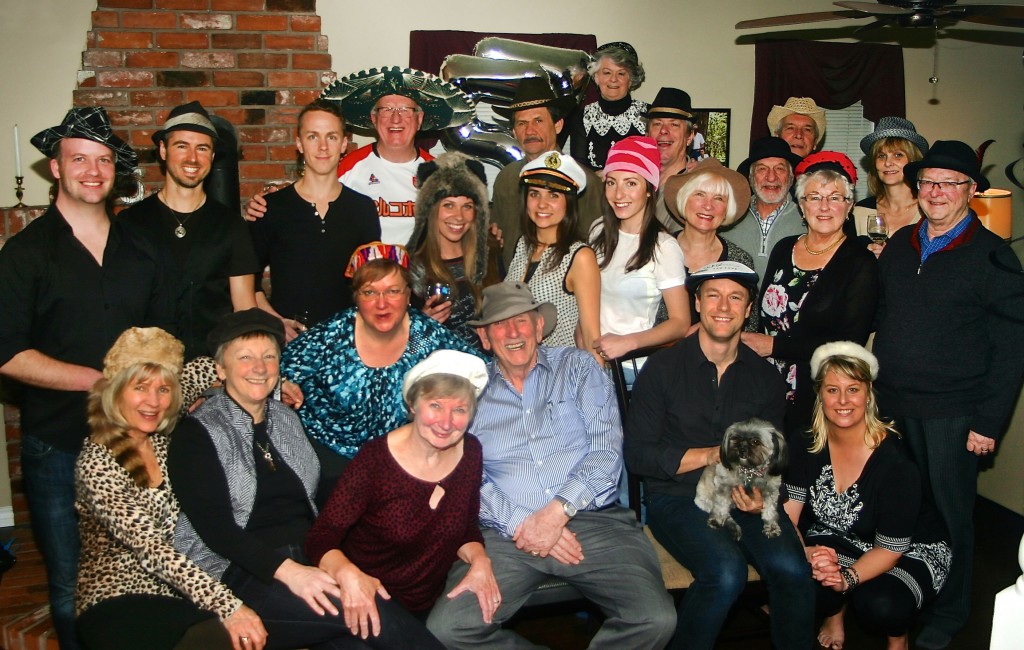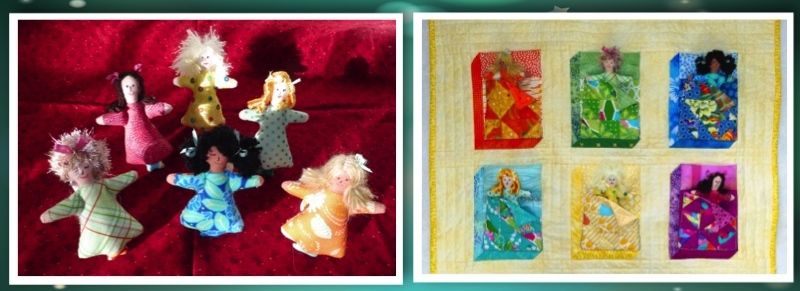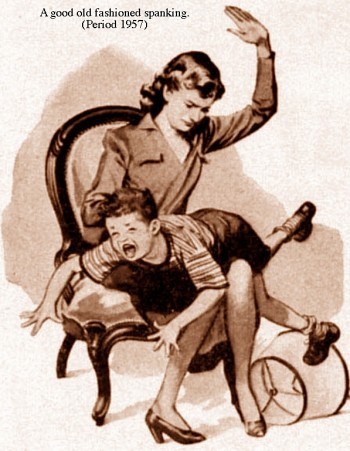Author Archive
Wow! Another Birthday Slideshow
Meet the Whole Gang
Victoria B.C. January 13, 2016.
(Double Click for Full Photo)
(Top Row) Lucas, Drew, Andrew, Harold, Gery, Linda, Garth, Cory, Patty
(Second) Shary, Lynn, Esther, Shea, Alysha, Madeline, Norma,
Bjorn, Ingar, Svend
(Front) Gery, Graham, Sean (and Lexi), Erika.
(Missing) Kia, Mike and Kyle (and Toby)
Thank you everyone for the wonderful evening of family, friends, food, wine and
good times at the Dunn’s home.
Here is a short slideshow of the evening events. I will post the photos in Facebook.
Link here to the full set of photo’s posted on McNeill Life Stories FB Page
Cheers,
Harold
(153)
Guns on the Street
January 9, 2016 (Web Source). Over the past several week’s various media groups have posted video’s or photos of kids in the USA practicing with handguns and various high power weapons. Parents being interviewed made it clear that learning to protect one’s self is important. Clearly, no bully will chance an encounter with this little girl in the playground.
President Obama’s Executive Order on Guns
This post flows from a FB post made by my nephew, Greg Yochim, showing a video of President Obama at a townhouse meeting on Anderson Cooper’s 360. Greg also made the following comment “It’s no secret that I like Obama, and as I watched the town hall meeting on AC 360 I tried to imagine Trump in this forum and it just seemed so inconceivable. (Yes, I know what that word means.).”
(816)
Six Little Dolls
Double Click to Expand the Photo
A very special woman in our home spends hundreds of hours designing, crafting and quilting special gifts for family and friends. This particular gift was destined for our Granddaughter Audrey Leclair who, this Christmas, is four years old. The Six Little Dolls to fill Six Little Deds made up Audrey’s 2015 Christmas Gift.
The quilt and dolls were lovingly crafted by Nana (Lynn McNeill) with an occasional helping hand from Esther Dunn (quilting), Linda Simonsen (hair) and Alysha Yakimishyn (faces)
If you look closely at the six little beds, you can see they are crafted in a three-dimensional manner and that the dolls can slip between the covers (each bed is individually crafted). We learned from mommy (Christine) that on opening each doll Audrey would give it a kiss and tuck it in a bed.
The quilt is designed as a wall hanging.
Cheers,
Harold
(133)
Graham and Harold’s Magical Christmas Adventure
Photo (Web Source, with a few Photoshop adjustments). In the mind’s eye Graham Hill makes his first
attempt at running the Skookumchuck Narrows. Gery Lemon preferred to stay on dry land. (December 2017)
Dear Graham and Gery,
While this post was written a month earlier, with the slideshow now complete it is time to go live. Rather than putting the slideshow at the end, it will be used as an introduction in an attempt to capture the spirit of the trip.
It was an amazing time, one I shall always cherish as it seems demands of life have conspired against finding that one-on-one time that only a trip like this can provide. Graham, you are an exceptional man, an easy conversationalist and your depth of knowledge on so many subjects are inspiring. Also, as you will no doubt agree, we have not only been gifted with the most amazing life partners, we also have a string of children, grandchildren and many friends who bring endless joy to our lives as we have moved along each successive stage. We could not have scripted our lives for a better result.
As for the following travel story, while I did not take any notes I hope that most of the family facts about your earlier life are correct and as for the make-believe stuff, that is simply a couple of old guys who remain daydream believers.
In preparing the final slideshow, the two of you will notice that I have plucked a dozen photographs from your respective Facebook pages to add flavour. Later, I will post all the photos on the open-access McNeill Life Stories Facebook Page so individual copies can be accessed at leisure.
In closing, many thanks to Herb Craig and Ann Skeltcher for their overnight hospitality on that lonely stretch of highway that leads to the hinterlands of the Sechelt Peninsula. There is nothing like good friends, a hot meal, glass of wine and a warm bed to take away the sting out of a hard day on the trail.
Your friend,
Harold
(January 16, 2016)
Individual photos of the Christmas Adventure now posted.
Another event involving Gery and Graham may be linked here: Gery Lemon Achieves New Milestone
Blog Post of Another Recent Event Harold and Graham attended: Wow! Another Slideshow
Introduction
Forever Young – Music by Joan Baez
1. A Narrow Escape
(1380)
DISPENSARY RAIDS GALORE!
Photo (Web Source – Gerry Kahrmann, PNG). Marihuana dispensaries across the B.C., including the Weeds store in Vernon (photo above), were on High Alert after recent RCMP raids in Nanaimo, Mission and Sechelt. In the Nanaimo raids sixteen people were arrested and a considerable quantity of cash and drugs seized. ((Vancouver Sun).
In cases like this the RCMP usually take great pains to display photos of the seized drugs, paraphernalia and cash (often in millions) however, this time they were photo shy and tight lipped. Neither did they mention how many guns, cars and homes were seized under the Civil Forfeiture Act, as such seizures are common practice in cases of multiple co-ordinated busts across the Province. Perhaps something else prompted these raids?
(297)
Spankings: Pros and Cons
Drawing (Google Source): A few may recognize this temper tantrum. The young woman having the tantrum was likely caused by her son doing something she did not like. We assume it is her child and we have no idea why she is striking him? Perhaps her favourite lamp was tipped over after he was told to stop roughhousing. Hmm. That could have been me when I knocked over and broke Dad’s kerosene lantern at the fish camp.
In the footer is a schoolmaster with “attitude switch” speaking to a couple of boys. Back in the day, his actions were considered good classroom discipline. Also, in the last century, as late as the 1970s a man was also allowed to physically ‘discipline’ his wife, servants, and apprentices.
Many, but not all, of the mom’s and dads who administered spankings, were likely following in the footsteps of their parents or grandparents as far as the parenting choices they made. If the parents and grandparents did not spank their children, it is unlikely those children would grow up and spank their children.
The Good Old Days
(7077)
RCMP Commissioner on the Wrong Track.
Ottawa (November 25, 2015): With a look and tone of concern, Commission Bob Paulson
spoke at a recent Security and Defence Conference in Ottawa about dangers posed when accessing the Internet. (Reference, Ottawa Citizen Article)
This post will consider whether comments made by the Commissioner are valid or whether they were just more fear-mongering as tends to be his pattern. The post will also make comparisons between Cyber Crime and Street Crime as a means to put some perspective around his warnings of approaching danger.
(Note: As usual over the first few days, as I reread the post looking for errors and omissions, I continue to make changes that help make for a better read. In addition, when I first learn about something like this (his comments at the conference) it drives me to respond as the suggestions drive another nail to the core of our democracy. It makes me wonder what in world was he thinking and why does he try to drive such fear? He should know better (he’s the Commissioner of the RCMP after all), but no, he chooses instead to drive fear. Thanks for staying with me. Cheers, Harold)
Cyber Crime
After reading various articles about the Commissioner’s most recent concerns and his suggestions on how to meet the challenge posed by what he claims is a lack in Internet Security, it seems he has gone a step to far. While he has always been a master at fear-mongering about all things involving domestic and  national security, it seem that having lost his comrades in fear, Stephen Harper, Vic Toews and a dozen others with whom he shared a common interest, has pushed him over the edge as he see’s himself and the force as the last bastion of protection against all things evil in the world?
national security, it seem that having lost his comrades in fear, Stephen Harper, Vic Toews and a dozen others with whom he shared a common interest, has pushed him over the edge as he see’s himself and the force as the last bastion of protection against all things evil in the world?
While terrorism and dangers of an attack has long been a subject close to his heart, it now seems the Commissioner now making dire warnings about the dangers lurking in cyberspace. While most would agree that caution is the watchword when surfing the web for shopping and entertainment or any of hundreds of other uses, the Commissioner has suddenly pushed the danger level to Code Red.
Following is a sprinkling of his words of warning as reported by the Ottawa Citizen (Italicized comments are from the Ottawa Citizen unless otherwise identified):
“Your safety, your family’s safety, your financial integrity is at risk and so we need to start having the conversation now”.
(383)
New Orleans: Peeling back the Mask
Photos (Web Source, then merged and wrapped using Photoshop)
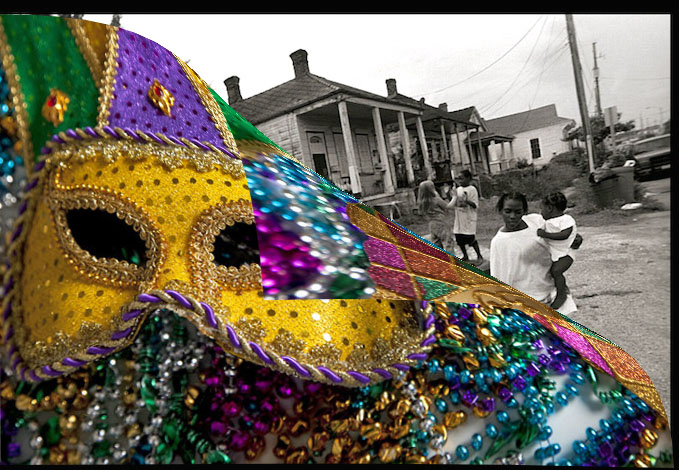
This post is actually a Tale of Two Cities. While New Orleans is widely known as the Big Easy to tourists and the well-heeled who call the city home, for a large and ever-growing number who work and live in the city, life is anything but easy. When the tourism mask is peeled back New Orleans becomes a city in which nearly half the population lives in poverty. Remember, this is a city that sits proudly among the Top 10 tourist destinations in the United States attracting over ten million visitors each year (Link)
January 1, 2018 (5300)
One a recent trip something that struck me is how New Orleans and Victoria, (our home city) are similar on several counts. Greater Victoria, the Garden City of Canada, has a population of roughly 365 thousand with New Orleans only slightly larger at 378. Both cities are sought after tourist destinations and while New Orleans is considerably hotter, both have agreeable climates, scenic waterways, and ample natural resources. Tourists in both cities are provided with first-class hotels, restaurants and tourist attractions, and even though Hurricane Katrina devastated New Orleans in 2005, the tourist trade now exceeds pre-Katrina levels. At this point, all semblance of the similarity ends. Continued in Part 2.
August 27, 2005, New Orleans was engulfed by Hurricane Katrina, a storm that carried a surge that breached the old and inadequate levees and flooded much of the city. It was one of the most destructive natural disasters in New Orleans history, yet much of the death and destruction was not caused by the storm but by wilful neglect — the failure to secure the city from the storm surge. That was a ‘black and white’ issue. To what extent has the city recovered?
1. The Mask: What the tourists see.
For visitors, the city presents a year-round fantasyland of boisterous, round-the-clock carousing that caters to every taste and where musicians, singers, and various other entertainers compete with the best. For anyone who loves music, particularly jazz, 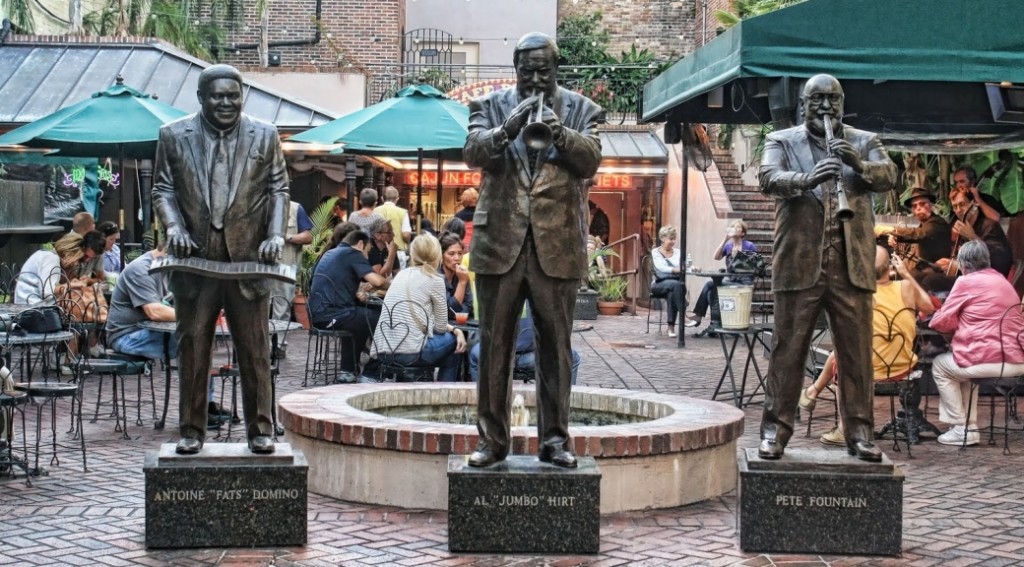 you will love New Orleans. Just spend an hour sitting in the open-air Café Beignet (Three Statutes in the Musical Legends Park) on Bourbon Street and you will be treated to the sweet sounds of jazz as ever-changing groups of local artists pick up the beat.
you will love New Orleans. Just spend an hour sitting in the open-air Café Beignet (Three Statutes in the Musical Legends Park) on Bourbon Street and you will be treated to the sweet sounds of jazz as ever-changing groups of local artists pick up the beat.
Wander along the Quarter to the north end where, on Frenchmen Street, you will likely find an ad hoc group of young men playing in a random brass group that will blow your socks off. Then, one day, walk along Basin Street to get a feel for the history of that fabled city.
For the more adventuresome, including the Catholics in our midst, Mardi Gras, “beginning on or after the Christian feasts of the Epiphany (Three King’s Day) and culminating on the day before Ash Wednesday,” is a celebration you should not miss. (Link) The celebration, also referred to as “Fat Tuesday, reflects the practice of the last night of eating richer, fatty foods before the ritual fasting of the Lenten season.” Whether anyone other than the poor has ever fasted in New Orleans is questionable, and whether this is a destination of choice for the Lenten season, is doubtful. If, by this point, you have not been able to strike the city off your ‘bucket list’ it will likely remain at or near the top until you finally decide to wade in. For most Canadians, it is less than a five-hour flight from any of our major centres.
(6031)

